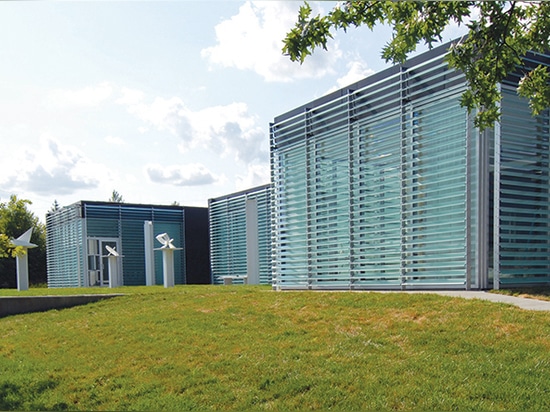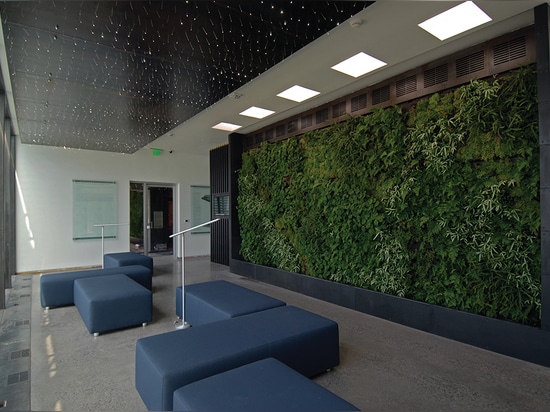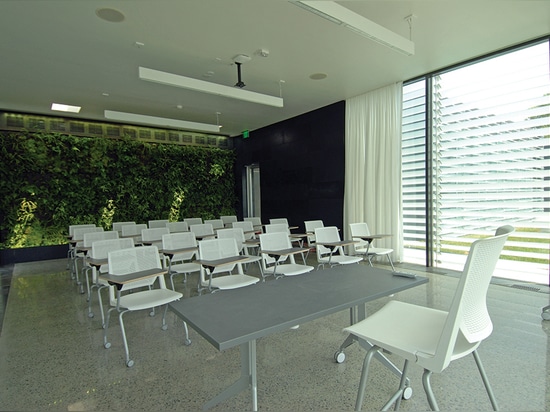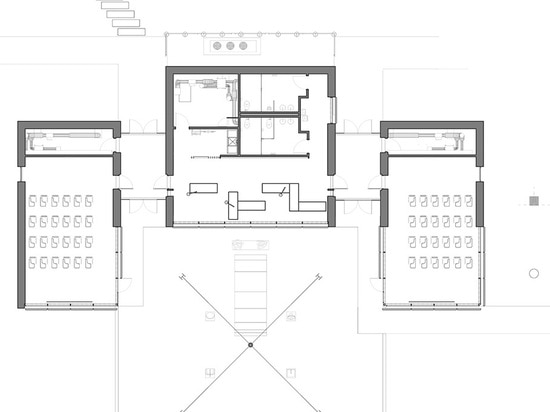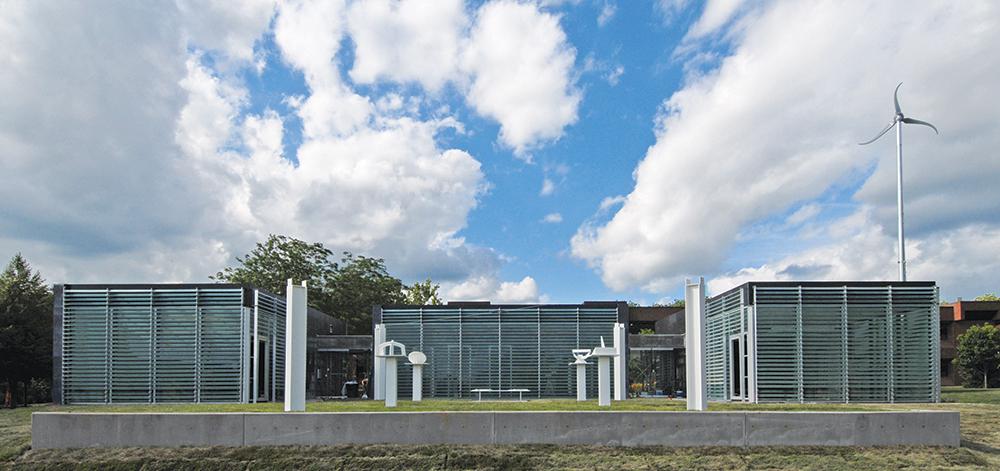
#PUBLIC ARCHITECTURE PROJECTS
Galileo's Pavilion
Studio 804 is the final design studio for graduate students at the University of Kansas (KU) School of Architecture, Design and Planning in Lawrence, Kansas.
While the design-build studio is typically focused on sustainable housing for disadvantaged communities, their latest undertaking is a classroom building for the nearby Johnson County Community College. The technically complex building serves the college's vision for "championing environmental sustainability in its curricula, buildings, and infrastructure." Studio 804 and KU supplied us with some text and images on the recently completed building.
Studio 804 is named for the graduate-level design-build class taught by J.L. Constant Professor Dan Rockhill. Students in the fulltime, two-semester course design a building during the fall each year and construct it in the spring. Last fall a group of administrators for the community college visited the Center for Design Research, a building that Studio 804’s designer-builders had recently completed. The CDR is an energy efficient, glass-and-stone clad classroom located on KU’s West Campus. The CDR inspired Terry Calaway, JCCC’s president, to ask Rockhill if Studio 804 could build an even more sophisticated building on their campus.
JCCC’s new building is sited just north of “Galileo’s Garden,” an interactive art piece by artist Dale Eldred. His artwork functions as a solar calendar, and uses several sculptures to demonstrate the way the sun’s path varies throughout the seasons. The plan of the new building is U-shaped, with a classroom housed in each of its two wings. A pair of vestibules and reception area join the wings. In the reception area students can view explanations of the building’s sustainability features. For example, the building’s energy consumption, and how much electricity its photovoltaic panels and wind turbine are producing are displayed on a monitor in real time. JCCC also receives credit from the local utility company for the electricity generated by the photovoltaic panels and wind turbine.
The use of recycled materials is an attribute of nearly all Studio 804’s buildings. In this case, portions of the north, west, and east façades of the building are clad in slate chalkboards reclaimed from schools throughout the Midwest. The south facades and remaining portions are clad in full-height glass panels. Louvered glass screens that resemble oversize jalousie windows cover these glass walls. The glass louvers are not just decorative. They are angled so they block heat from the summer sun when it is high relative to the horizon. In the winter the sun shines between the louvers, heating the polished concrete floors inside.
Other sustainability features include LED lighting, and walls planted with ferns to purify the indoor air. The harvesting of rainwater for later use, and green roof trays that grow drought resistant plants both reduce runoff from the building. Some parts of the building were prefabricated before being taken to the building site and assembled in the School of Architecture, Design, and Planning’s 80,000 square-foot East Hills shop and fabrication facility, just outside Lawrence.
Galileo’s Pavilion is expected to earn a U.S. Green Building Council LEED Platinum rating, the highest that is offered by the organization. It would be Studio 804’s fifth building to do so in as many years. Rockhill said his students were inspired by JCCC’s commitment to resource conservation and changing the way its students think about buildings. “Universities are about ideas and service to communities. Our role is to demonstrate the ideas and concepts that will propel us into a future that builds on both the successes and mistakes of the past,” he said.
